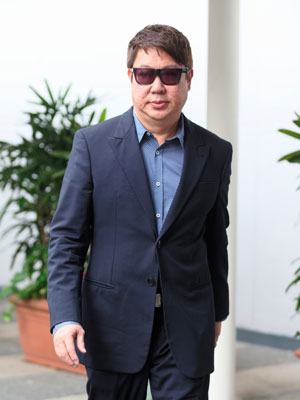It was a lively morning in court today as senior counsels Kenneth Tan and N. Sreenivasan began cross-examination of Wahju Hanafi.
After four days of hearing the Prosecution question its witness Wahju Hanafi, the defense team for the six accused finally began cross-examination this morning at the CHC trial.
Coming after deputy public prosecutor Tan Kiat Pheng’s somewhat confusing line of questioning earlier in the week, both senior counsel Kenneth Tan, acting for John Lam and senior counsel N. Sreenivasan for Tan Ye Peng were a breath of fresh air with their systematic and logical approach in their cross-examination.
Using transcript references, Kenneth Tan took Hanafi through a number of arguable points during the examination in chief.
The court heard that Hanafi, having been impacted by Sun Ho’s concert in Singapore in 2002, requested to the management board of CHC to allow him to refund his donations to the church so he could use it to sponsor the Crossover mission. Between the years of 2003 and 2007, Hanafi had shared numerous times during church service about how God had blessed him, turning him from someone who earned a monthly salary of $300 to a person of high net worth, who now used his financial success for God’s work.
Hanafi also established the nature of his cashflow issues and his relationship with Kong Hee and Tan Ye Peng. Hanafi explained that all the times he had brought his financial woes to Kong and Tan, he did so because they were his pastors and spiritual mentors. He also explained that mostly these concerns involved temporary cashflow issues, not his net worth.
Through the senior counsel’s questioning, it also became clear that Hanafi had answered erroneously a few times during the EIC. For example, he had named John Lam as one of the four who signed a personal guarantee in favor of him when the four had in fact been Kong, Tan, Chew Eng Han and Koh Siow Ngea. He had also mistakenly thought that Lam was the Chairman of the CHC management board all the years during the Crossover, when in fact, Lam was only the Chairman in 2011 after the investigations had begun.
Hanafi also admitted he did not know much about how CHC’s management made decisions. He said that, to his knowledge, Lam had not been involved in the budgeting and financing of the Crossover Project and that Lam’s involvement in the Crossover Project was as a church leader, supporting the church vision.
Hanafi also told the court that AMAC Capital Partners (Pte) Ltd, CHC’s investment management company essentially invested the church’s money in Xtron Productions Pte Ltd’s bonds to yield a higher interest.
The senior counsel also addressed the “secret letter” of assurance that constituted a return promise by the church that in the event the bonds were converted to shares, the church would sell back the shares to Firna at US$1. Hanafi stressed that he had not requested for this letter as he did not want the church to suffer any loss. Hanafi further revealed that had the church exercised this option, he would not have relied on this undertaking, and would have given the full sum due back to the church.
Prosecution’s “Three Scenarios” Of The Firna Bonds
Sreenivasan took the court through a simple yet thorough journey through the prosecution’s many points, distilling the issues with “yes” and “no” answers from Hanafi.
The senior counsel suggested to the court that the prosecution had presented three different scenarios in its EIC:
- That the CHC-Firna bond monies were used by Hanafi personally
- That Serina Wee was giving directions about the use of the monies
- That the monies came from Papua New Guinea
The senior counsel suggested a fourth scenario and asked Hanafi to confirm if he was correct.
Hanafi testified that Firna used the funds from its bond proceeds to repay a $7 million debt owed to Ultimate Assets, a British Virgin Island company owned by Hanafi and his wife. Hanafi gave evidence that he did not view these funds as misappropriated monies as UA, ie he, together with his wife, was the lender of the funds to Firna. These bonds had to be repaid with interest and he had put his personal wealth behind the bonds.
When Hanafi expended the sums from UA for the Crossover, he clarified that these funds belonged to him and his wife, and not Firna. He confirmed the bonds had been drafted by well-respected law firms, namely Drew and Napier and Rajah and Tann in Singapore, and ABNR in Jakarta. Hanafi said he had no reason to suspect there was anything illegal about the bond transactions. In fact, as the owner of Firna, he saw nothing dishonest in receiving the bond proceeds from CHC as well as the sums of $5.8 m and $5.6m from AMAC.
Sreenivasan also established that in April and May 2010 when Tan, Chew and Serina Wee needed to get funds back for the repayment of the advance rental, it was for the church’s acquisition of shares in Suntec Singapore.
Hanafi gave evidence that both the CHC-Firna and Xtron-Firna bonds had been paid back in full and with interest. He had kept his three promises to sponsor the Crossover, repay the CHC-Firna bonds and to repay the Xtron-Firna bonds.
The defense counsel will continue cross-examination of Hanafi on Monday.

